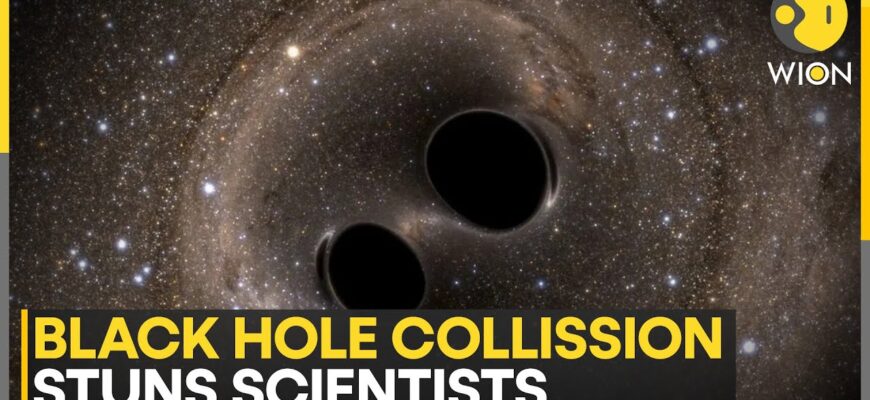In a landmark discovery, scientists have announced the detection of the most massive binary black hole merger ever observed using gravitational waves. This monumental cosmic collision, involving two black holes far exceeding the size of previously detected pairs, has created a new heavyweight champion in the gravitational wave catalog.
The event, designated GW231123, was first registered by the sensitive detectors of the LIGO-Virgo-KAGRA collaboration back in November 2023. It represents the cataclysmic merger of two colossal black holes, with estimated masses approximately 100 and 140 times that of our Sun. Imagine two cosmic behemoths, each a singularity of immense density, locked in a death spiral, picking up speed as they drew closer before finally coalescing into a single, even larger entity.
The result of this incredible cosmic dance is a single black hole with a staggering mass of around 225 times the mass of the Sun. For those keeping score, 100 plus 140 equals 240. The “missing” mass – roughly 15 solar masses – wasn`t lost; it was radiated away in the form of gravitational waves during the violent merger process, a direct and powerful confirmation of Einstein`s theory of general relativity on the grandest scales. It’s quite something to think about: an energy output equivalent to many suns instantly converted into ripples in spacetime.
The detection was made possible by the global network of gravitational wave observatories, including the LIGO facilities in Hanford, Washington, and Livingston, Louisiana. These incredibly precise instruments measure tiny distortions in spacetime caused by passing gravitational waves from distant cosmic events.
This discovery is particularly significant because it shatters previous records. While gravitational wave astronomy has matured rapidly, leading to the detection of approximately 300 black hole mergers to date, GW231123 stands out due to the sheer mass of the involved objects and the resulting black hole. The previous record-holding merger, GW190521, detected in 2019, resulted in a black hole estimated to be around 140 solar masses, itself a remarkable discovery at the time. This new event represents a substantial leap beyond that, confirming the existence of binary systems composed of even more massive stellar-mass black holes than previously thought common.
The scientific community is preparing to delve deeper into the implications of this finding. The detailed analysis of GW231123 is set to be formally presented at scientific conferences in Glasgow, Scotland, held from July 14th to 18th. Such massive mergers provide crucial data points for understanding the formation and evolution of black holes and galaxies across cosmic history. Each new detection is like a new note in the symphony of the universe, and GW231123 is certainly a powerful chord.








